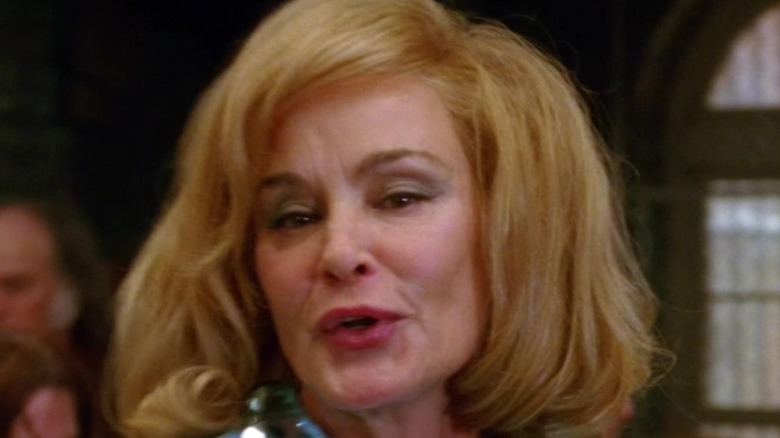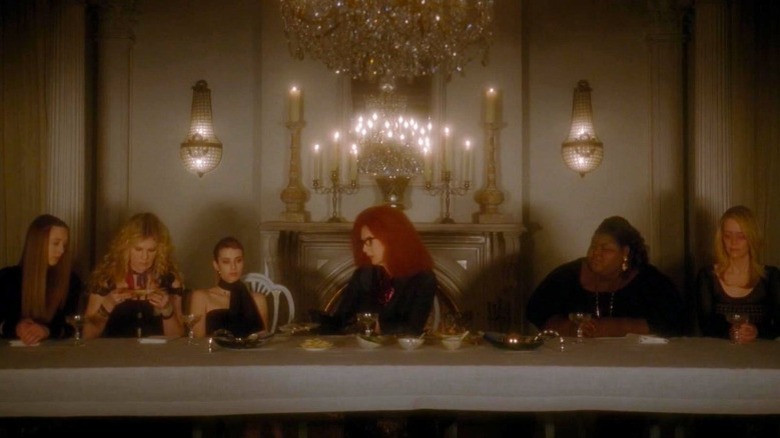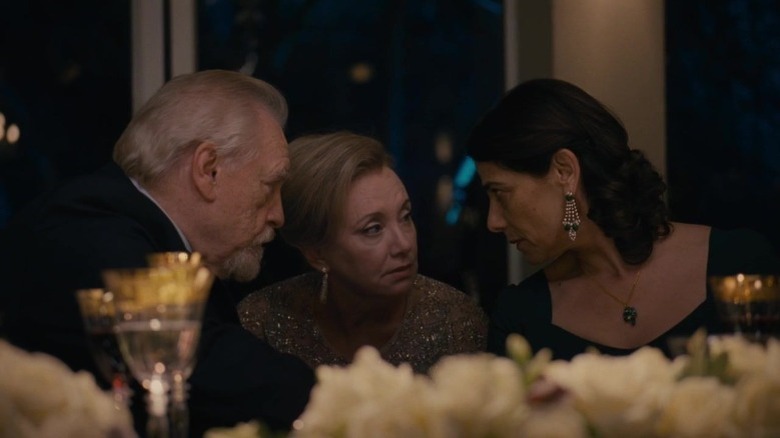What You Didn't Notice About AHS's Filming Technique
Among other things, FX's "American Horror Story" is notorious for how much the shooting process demands of the cast and crew. In addition to the frightening, emotionally draining, taboo-breaking narrative content, which has often resulted in bizarre on-set experiences for the actors, the need to give each season its own identity while still conforming to an overarching aesthetic vocabulary requires the show's art, music, and photography departments to be incredibly resourceful. It is often the case that, to make something work for "AHS," the filmmakers must go farther than they would need to go in a more conventional production.
There are many examples of that dedication to the craft when you look at what goes on behind the scenes, from the careful design of the opening sequences to the daunting challenges faced by the VFX and makeup folks to the hand-picking of artists whose lives fit the "outcast" theme to supply needle drops for "Freak Show." And then there's one particular aspect of the cinematography that, while not necessarily obvious, goes a long way towards explaining why "American Horror Story" felt so unique right out of the gate — and why something about the show seems to have changed as of late.
The first five seasons of American Horror Story were shot on film
"Shooting on film" has become a rare practice in the 21st century, as the evolution of digital technology increasingly outweighs the demands, risks, and costs of working with film stock. Yet there are many productions that still spring for the grain, unique color balance, and unmatched sense of physical reality yielded by film, and that was the case of "American Horror Story" for a good deal of its run.
Starting with pilot DoP Christopher Baffa and continuing on with head cinematographer Michael Goi through the first five seasons, "American Horror Story" was shot on both 16mm and 35mm film — a choice that gave Goi the opportunity to experiment with a variety of analog techniques to achieve striking results, such as using a hand-cranked camera to give an authentic old-time feel to 1940s flashbacks (via No Film School) and overexposing the film stock in conjunction with diffusion filters to create the overwhelming white lights of an alien invasion (via Vulture). It's no wonder that, though they were sometimes criticized for other reasons, the first five seasons were consistently acclaimed for their visuals.
It's also no wonder that everything post-"Roanoke" has felt so different, looks-wise: With Goi leaving the show and Gavin Kelly taking over as the main DoP, "AHS" also mostly abandoned its tradition of shooting on film. Kelly's mission, therefore, became to do justice to the first five seasons' distinctive visuals while primarily shooting digitally. He achieved this by being extra-careful with his lighting and color choices, as detailed in an interview with American Cinematographer.
American Horror Story is not the only recent TV show to opt for a film look
Given one of the things that led to the decline of analog shooting was the adoption of digital projectors by film theaters, that decline happened even faster on television, where film stocks already had to be converted to digital in order to air anyway. Even so, a number of well-known TV shows besides "American Horror Story" have continued to opt for the unique look of film.
One of the best-known examples is AMC's "The Walking Dead," which was shot on 16mm film for most of its run, right up until COVID-19 production adaptations forced the filmmakers to switch to digital for the final six "bonus" episodes of Season 10 and the upcoming Season 11. "The Walking Dead" isn't the only show to favor film grain as a means of evoking classic horror films: That's also the case of Netflix's "Stranger Things," which helps explain why that show feels so much like a genuine lost Amblin production.
The house of television prestige par excellence, HBO, unsurprisingly also makes room for film shooting, whether it's in an acclaimed Shakespearean corporate drama like "Succession" (pictured above) or a sci-fi blockbuster event like "Westworld" (via IndieWire). Analog shooting is not exclusive to huge flagship shows, though: According to IMDb, the vastly underrated ABC family sitcom "The Middle" was shot on 35mm film, befitting its aura of an authentic, low-key Midwestern indie gem. As you can see, shooting on film can have wildly varied benefits — it's all a matter of what each director of photography's vision is.


